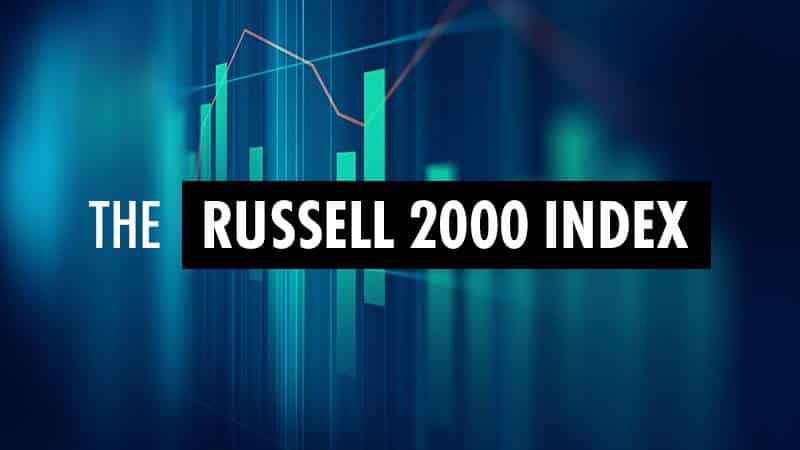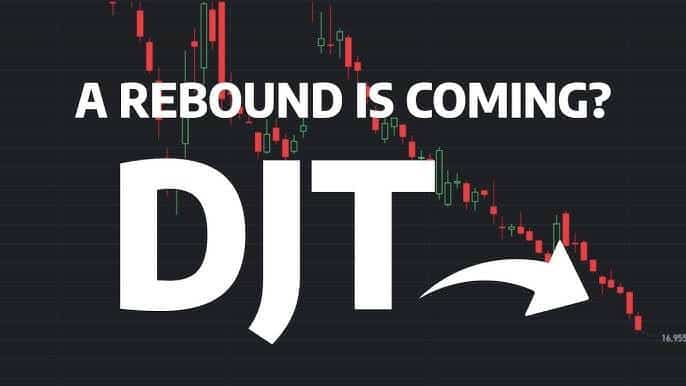Google Stock Split History and Its Impact on Investors
Google has undergone several stock splits over the years, which have had a significant impact on the company’s stock price and investor sentiment.
- 2-for-1 Stock Split (2014): In 2014, Google implemented a 2-for-1 stock split, effectively doubling the number of shares outstanding while halving the price per share. This move was intended to make the stock more accessible to a wider range of investors.
- 20-for-1 Stock Split (2022): In 2022, Alphabet Inc. announced a 20-for-1 stock split, further increasing the number of shares and reducing the price per share. This split was aimed at making the stock more affordable and attractive to individual investors.
Stock splits can have a positive impact on investor sentiment, as they can increase liquidity and make the stock more accessible. However, it’s important to note that stock splits do not inherently change the underlying value of the company or the investment.
Analyzing Google Stock Forecast and Predictions for the Future
As one of the most prominent tech companies in the world, Google’s stock performance is closely watched by investors, analysts, and industry experts. When it comes to forecasting the future of Google stock, there are several factors to consider:
- Industry Trends: Google’s core business of search, advertising, and cloud computing is heavily influenced by broader trends in the technology and digital advertising industries.
- Competitive Landscape: Google faces competition from other tech giants like Amazon, Microsoft, and Apple, as well as emerging players in specific markets.
- Innovation and Diversification: Google’s ability to continuously innovate and expand its product and service offerings can impact its long-term growth potential.
- Regulatory Environment: Changes in government regulations, particularly in areas like data privacy and antitrust, can affect Google’s operations and financial performance.
By analyzing these factors, various financial institutions and analysts have published their predictions for the future performance of Google stock. However, it’s important to remember that stock market forecasts are not guaranteed, and investors should conduct their own due diligence before making investment decisions.
Toplist of 5 Competitors to Google Stock
While Google is a dominant player in the tech industry, it faces competition from other prominent companies that may also be of interest to investors. Here are five key competitors to Google stock:
- Amazon Stock (AMZN): Amazon is a diversified e-commerce and technology company that competes with Google in areas like cloud computing, digital advertising, and online retail.
- Microsoft Stock (MSFT): Microsoft is a leading provider of enterprise software and cloud computing services, and it competes with Google in areas like cloud infrastructure, productivity software, and search.
- Apple Stock (AAPL): As a major player in the consumer electronics and mobile device market, Apple’s products and services overlap with some of Google’s offerings, particularly in the areas of mobile operating systems and digital services.
- Facebook Stock (FB): While not a direct competitor in Google’s core search and advertising business, Facebook (now Meta Platforms) is a significant player in the digital advertising and social media landscape.
- Nvidia Stock (NVDA): Nvidia is a leading manufacturer of graphics processing units (GPUs) and is a key player in the growing field of artificial intelligence and machine learning, which are critical to Google’s operations.
Comparing the performance and growth potential of these competitors can provide valuable insights for investors considering an investment in Google stock.
Latest News and Updates on Google Stock
As a prominent and closely watched company, Google (Alphabet Inc.) is constantly making headlines with its latest developments, acquisitions, and financial results. Here are some of the most recent news and updates on Google stock:
- Q4 2022 Earnings Report: Google recently reported its Q4 2022 financial results, which included strong revenue growth and increased profitability, despite some challenges in its advertising business.
- Layoffs and Restructuring: In early 2023, Alphabet announced plans to lay off 12,000 employees, or about 6% of its global workforce, as part of a broader restructuring effort.
- Antitrust Investigations: Google continues to face scrutiny from regulators around the world, with ongoing antitrust investigations and lawsuits related to its dominance in the digital advertising and search markets.
- New Product Launches: Google has been actively expanding its product portfolio, with recent launches of its Pixel 7 smartphone, Pixel Tablet, and updates to its cloud computing and artificial intelligence offerings.
- Sustainability Initiatives: Alphabet has made significant commitments to sustainability, including plans to operate its data centers and campuses on 24/7 carbon-free energy by 2030.
By staying informed about the latest news and developments surrounding Google, investors can better understand the company’s strategic direction, potential risks, and growth opportunities.
How to Track Google Stock Using Watchlists and Charts
As an investor, it’s crucial to closely monitor the performance of Google stock and stay up-to-date with the latest market trends and movements. One effective way to do this is by using watchlists and charts.
- Watchlists: Create a watchlist on your preferred investment platform or brokerage app to track the real-time price and performance of Google stock, along with any other stocks you’re interested in. This allows you to easily compare Google’s performance to the broader market and its competitors.
- Stock Charts: Utilize interactive stock charts to analyze Google’s historical price movements, trading volume, and other technical indicators. These charts can help you identify patterns, trends, and potential support or resistance levels, which can inform your investment decisions.
- Financial Metrics: Keep an eye on key financial metrics for Google, such as earnings per share (EPS), price-to-earnings (P/E) ratio, and revenue growth. These metrics can provide valuable insights into the company’s financial health and future prospects.
- News and Analyst Ratings: Stay informed about the latest news, analyst reports, and recommendations related to Google stock. This information can help you understand the market’s sentiment and potential catalysts for the stock’s performance.
By actively tracking and analyzing Google stock using these tools and resources, you can make more informed investment decisions and better position yourself to capitalize on the company’s growth potential.
5 featured stocks index in 2025
Investing in Google Stock Through Fintech Platforms
In the digital age, investors have access to a wide range of fintech platforms that make it easier than ever to invest in Google stock. These platforms offer a variety of features and services that can streamline the investment process and provide valuable insights.
- Online Brokerages: Popular online brokerages like Fidelity, Charles Schwab, and E*TRADE allow you to easily buy, sell, and track Google stock, as well as access research, analysis, and educational resources.
- Robo-advisors: Automated investment platforms, such as Betterment and Wealthfront, can incorporate Google stock into diversified investment portfolios, based on your risk tolerance and financial goals.
- Mobile Trading Apps: Apps like Robinhood, Webull, and TD Ameritrade offer user-friendly interfaces and features that enable you to invest in Google stock on-the-go, with real-time quotes and market data.
- Fractional Shares: Some fintech platforms, such as Stockpile and Stash, allow you to invest in partial shares of Google, making it more accessible for investors with limited capital.
- Retirement Accounts: You can also hold Google stock within your retirement accounts, such as a 401(k) or IRA, to potentially benefit from the company’s long-term growth potential.
By leveraging these fintech platforms, you can streamline the process of investing in Google stock, access valuable research and tools, and potentially achieve your financial goals more effectively.
If you’re ready to unlock the potential of Google stock and start investing in this tech giant, consider opening an account with a leading fintech platform today. With a wide range of features and resources at your fingertips, you can make informed decisions and take the first step towards building a diversified investment portfolio.
Exploring the Potential of Google Stock in the Tech Industry
Google, now part of the Alphabet Inc. conglomerate, has firmly established itself as a dominant force in the technology industry. As an investor, understanding the company’s core business segments and growth opportunities can help you assess the potential of Google stock.
- Search and Advertising: Google’s flagship search engine and digital advertising platform remain the company’s primary revenue drivers, accounting for the majority of its overall earnings.
- Cloud Computing: Google Cloud, the company’s cloud infrastructure and platform services, has been a rapidly growing business segment, challenging industry leaders like Amazon Web Services and Microsoft Azure.
- Hardware and Devices: Google has expanded its hardware offerings, including the Pixel smartphone line, Nest smart home devices, and Chromebook laptops, diversifying its revenue streams.
- YouTube and Digital Media: Google’s ownership of YouTube, the world’s largest video-sharing platform, provides a significant foothold in the digital media and entertainment landscape.
- Artificial Intelligence and Machine Learning: Google’s investments in AI and machine learning technologies, such as its DeepMind subsidiary, position the company at the forefront of these rapidly evolving fields.
By understanding the breadth and depth of Google’s business segments, investors can better evaluate the company’s long-term growth potential and its ability to adapt to changing market dynamics within the tech industry.
Dividends and Other Financial Aspects of Google Stock
While Google (Alphabet Inc.) has not historically been known as a dividend-paying stock, the company’s strong financial performance and cash reserves have led to speculation about potential future dividend payouts.
- Dividend Policy: As mentioned earlier, Google has not paid regular dividends to shareholders. However, the company’s board of directors has the authority to declare and pay dividends if they choose to do so.
- Share Buybacks: In lieu of dividends, Google has implemented share buyback programs, which can be seen as an indirect way of returning capital to shareholders by reducing the number of outstanding shares.
- Cash Reserves: Google maintains a significant amount of cash and short-term investments on its balance sheet, which provides the company with financial flexibility and the potential to invest in growth initiatives or return capital to shareholders.
- Valuation Metrics: When evaluating Google stock, investors should consider key financial metrics such as price-to-earnings (P/E) ratio, price-to-sales (P/S) ratio, and price-to-book (P/B) ratio, which can provide insights into the stock’s valuation and potential for growth.
- Insider Ownership: The significant ownership of Google stock by the company’s founders and other insiders can be viewed as a positive signal, as it aligns their interests with those of minority shareholders.
By understanding these financial aspects of Google stock, investors can make more informed decisions about the company’s long-term prospects and the potential risks and rewards associated with an investment in the tech giant.
Factors Affecting the Performance of Google Stock
The performance of Google stock is influenced by a variety of factors, both internal and external to the company. As an investor, it’s important to be aware of these factors and how they can impact the stock’s price and overall investment potential.
- Financial Performance: Google’s quarterly and annual financial results, including revenue growth, profitability, and key operating metrics, can significantly affect investor sentiment and the stock’s price.
- Competitive Landscape: The competitive dynamics within the tech industry, particularly the actions and performance of Google’s peers, can influence the company’s market share and growth opportunities.
- Regulatory Environment: Changes in government regulations, particularly in areas such as data privacy, antitrust, and taxation, can have a significant impact on Google’s operations and financial performance.
- Technological Trends: Advancements in technology, including the emergence of new platforms, devices, and consumer preferences, can affect Google’s ability to maintain its competitive edge and adapt to industry shifts.
- Macroeconomic Conditions: Broader economic factors, such as interest rates, inflation, and consumer spending patterns, can impact the overall performance of the stock market and, consequently, the price of Google stock.
By staying informed about these factors and monitoring their potential impact on Google’s business, investors can make more informed decisions and better position themselves to capitalize on the company’s growth potential.
Invest in Google Stock, Buy Google Stock
If you’re convinced of the potential of Google stock and are ready to make an investment, there are a few key steps you can take:
- Research and Analyze: Thoroughly research Google’s business model, financial performance, competitive landscape, and growth prospects. Utilize the resources and tools discussed earlier, such as watchlists, charts, and financial metrics, to inform your investment decision.
- Choose the Right Share Class: Decide which class of Google stock (Class A, Class B, or Class C) aligns best with your investment goals and risk tolerance.
- Open a Brokerage Account: Set up an account with a reputable online brokerage or fintech platform that offers access to Google stock and the ability to manage your investments.
- Place Your Order: Once you’ve completed your research and are ready to invest, place a buy order for the desired number of Google shares through your brokerage platform.
- Monitor and Manage: Regularly monitor the performance of your Google stock investment, adjust your position as needed, and stay informed about the latest news and developments surrounding the company.
Remember, investing in any stock carries risks, and it’s essential to diversify your portfolio and invest within your risk tolerance. By conducting thorough research and making informed decisions, you can potentially unlock the long-term growth potential of Google stock and align it with your broader investment strategy.
Tips for Investing in Google Stock
As you consider investing in Google stock, here are some additional tips to keep in mind:
- Invest for the Long-Term: Google is a well-established company with a strong track record of innovation and growth. Approach your investment with a long-term mindset, as short-term market fluctuations are common.
- Diversify Your Portfolio: While Google is a compelling investment, it’s important to diversify your portfolio across different sectors, industries, and asset classes to manage risk.
- Dollar-Cost Averaging: Consider implementing a dollar-cost averaging strategy, where you invest a fixed amount at regular intervals, to smooth out the impact of market volatility.
- Stay Informed: Continuously monitor news, analyst reports, and financial data related to Google to stay informed about the company’s performance and any potential risks or opportunities.
- Consult with a Financial Advisor: If you’re unsure about your investment strategy or have specific financial goals, consider consulting with a qualified financial advisor who can provide personalized guidance.
By following these tips and leveraging the insights provided in this comprehensive guide, you can make more informed decisions and potentially capitalize on the growth potential of Google stock.
Google, now part of Alphabet Inc., has firmly established itself as a dominant force in the technology industry, with a diverse portfolio of products and services that continue to shape the digital landscape. As an investor, understanding the nuances of Google stock, its financial performance, growth potential, and the factors that influence its price can help you make informed decisions and potentially unlock the long-term value of this tech giant.
By utilizing the resources and strategies outlined in this guide, you can effectively track, analyze, and invest in Google stock, aligning it with your broader investment goals and risk tolerance. Remember, investing Investing in Google stock can be a compelling opportunity for those seeking exposure to the tech industry’s growth and innovation. However, it’s important to approach this investment with a well-rounded understanding of the company’s dynamics, its competitive landscape, and the broader market forces that can impact its performance.
One key factor to consider is Google’s ongoing commitment to diversification and expansion beyond its core search and advertising business. The company’s investments in cloud computing, hardware, and emerging technologies like artificial intelligence and self-driving cars demonstrate its ambition to maintain its dominance in the tech sector.
Additionally, Google’s strong financial position, with a substantial cash reserve and a history of strategic acquisitions, suggests that the company is well-positioned to navigate market challenges and capitalize on new opportunities. This financial strength, combined with the company’s innovative culture and talented workforce, can be seen as positive indicators for long-term investors.
However, it’s crucial to also be mindful of the potential risks and challenges that Google may face. Regulatory scrutiny, particularly in the areas of data privacy and antitrust, can introduce uncertainty and impact the company’s operations. Additionally, the highly competitive nature of the tech industry means that Google must continuously adapt to shifting consumer preferences and technological advancements.
When evaluating Google stock as a potential investment, it’s essential to conduct thorough research, analyze financial metrics, and stay informed about the latest developments within the company and the broader industry. This comprehensive approach can help investors make informed decisions and potentially capitalize on the long-term growth potential of this tech giant.
Ultimately, investing in Google stock requires a balanced assessment of the company’s strengths, weaknesses, opportunities, and threats. By understanding the nuances of this investment, investors can make more informed decisions and potentially position themselves for success in the dynamic and ever-evolving technology landscape.






































